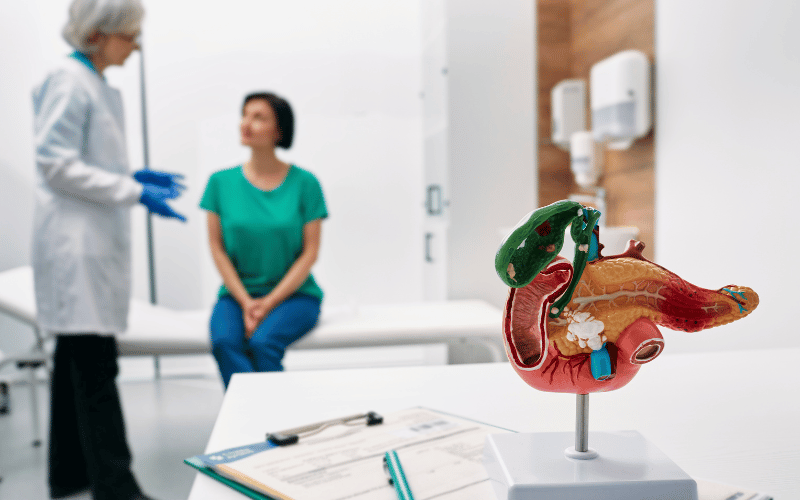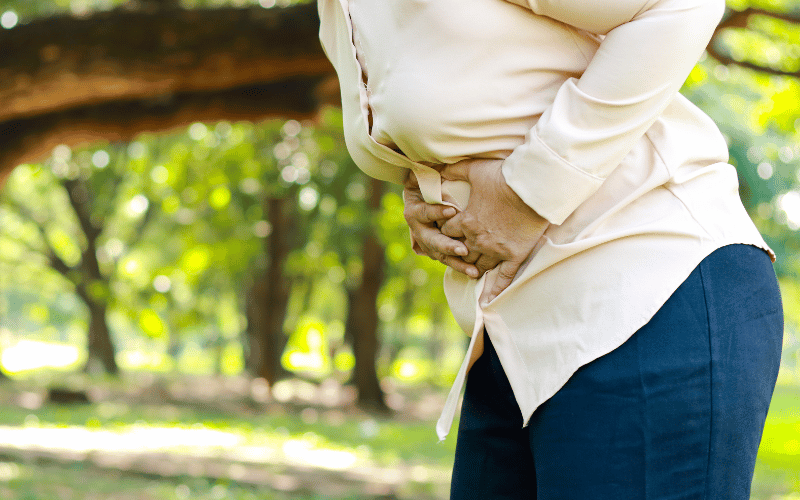Introduction: Unraveling the Symptoms of Chronic Cholecystitis
Chronic cholecystitis lurks in the shadows of digestive disorders, often misunderstood and misdiagnosed. It’s a persistent condition, marked by the inflammation of the gallbladder that evolves over years, often after repeated attacks of acute cholecystitis or due to gallstones. Unlike its acute counterpart, which flares up suddenly, chronic cholecystitis whispers its presence through symptoms that become the unwanted companions of one’s daily routine.

The symptoms, although consistent, can be as cryptic as they are chronic. Pain in the upper right abdomen, particularly after a rich meal, can be the body’s first distress signal. It’s a discomfort that can range from dull to severe, reminding individuals that all is not well within. This condition stealthily contributes to the tapestry of chronic digestive issues, where bloating, gas, and a nuanced intolerance to fatty foods become a pattern hard to ignore.
Amidst these indicators, chronic cholecystitis may also manifest through systemic signs like fever, chills, and jaundice—each a tell-tale sign that infection and bile duct obstruction are part of the narrative. The journey with this ailment is also marked by the insidious onset of nausea and a loss of appetite leading to unintended weight loss, often leaving individuals feeling like mere spectators of their own health.
Understanding the full spectrum of chronic cholecystitis symptoms is not just about diagnosing an ailment—it’s about regaining control. The nuanced changes, from fluctuations in stool quality to unexpected fatigue, are pieces of a puzzle that, when pieced together, can paint a complete picture of one’s gallbladder health.
The goal of this exploration is not merely to list symptoms but to empower those affected to recognize and articulate their experiences. It’s about providing clarity amidst confusion, offering insights into what the body communicates through symptoms often brushed aside. It’s time to give voice to the silent struggle with chronic cholecystitis, opening doors to targeted management and improved quality of life.
1. Abdominal Pain: The Primary Herald of Cholecystitis

Abdominal pain that is specific to chronic cholecystitis often presents a clinical conundrum. It isn’t the sharp, unmistakable stab associated with the acute version; rather, it’s a dull, lingering discomfort that tends to manifest under the ribs on the right side. The pain may radiate, wrapping around the body to the back or shoulder, and typically worsens after meals, particularly those heavy in fats.
Such discomfort is not arbitrary; it results from the gallbladder’s struggle to contract against the obstruction of gallstones or the stiffness caused by inflammation. As the gallbladder’s walls thicken over time, the pain can become a chronic whisper, ebbing and flowing with the body’s digestive rhythms. It is the persistence of this pain, often ignored or attributed to less serious causes, that can be the most telling symptom of an underlying chronic cholecystitis.
Despite the pain’s consistent presence, its intensity can vary throughout the day, potentially easing when fasting or overnight. The nature of the pain may also evolve with the condition’s progression, sometimes mimicking other gastrointestinal disorders, which emphasizes the importance of its recognition as a potential sign of chronic cholecystitis.
The fascinating aspect of this symptom is its ability to reveal the condition’s severity. While initially mild, the discomfort can increase in intensity as the inflammation persists, indicating the need for closer observation. Moreover, this pain, when combined with other symptoms, can paint a more comprehensive picture of chronic gallbladder inflammation. (1)